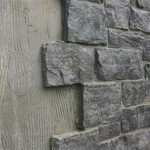If you’re looking for a way to reduce the noise from outside or from other rooms in your home, sound deadening material for interior walls might be the answer. Sound deadening materials can help to reduce noise levels significantly and can improve the acoustics in any home. In this comprehensive guide, we will take a look at different sound deadening materials and how they can be used in your home.
What are Sound Deadening Materials?
Sound deadening material is any material that absorbs noise, such as foam or insulation. These materials reduce the amount of sound that can travel through walls, ceilings, and floors, helping to make a room quieter and more comfortable. Sound deadening materials can also help to improve the acoustics in a room, making music and conversations sound better.
Types of Sound Deadening Materials
There are several types of sound deadening materials available on the market today, including:
- Foam: Foam is a popular choice for sound deadening material, as it is lightweight and inexpensive. It can be used to fill in any gaps in walls or floors, and it absorbs sound waves, helping to reduce noise levels.
- Insulation: Insulation is a more expensive option, but it is one of the most effective sound deadening materials. Insulation is typically made from fiberglass, cellulose, or foam and is used to line walls and ceilings, helping to reduce noise levels.
- Acoustic Panels: Acoustic panels are specially designed panels that absorb sound waves, helping to reduce noise levels in a room. They can be used on walls or ceilings, and they come in a variety of designs and colors.
Benefits of Sound Deadening Materials
Using sound deadening materials in your home has several benefits, including:
- Reduced Noise Levels: Sound deadening materials can help to reduce noise levels significantly, making a room quieter and more comfortable.
- Improved Acoustics: Sound deadening materials can also help to improve the acoustics in a room, making music and conversations sound better.
- Energy Efficiency: Sound deadening materials can help to reduce the amount of energy lost through walls and ceilings, making your home more energy efficient.
How to Install Sound Deadening Materials
Installing sound deadening materials is relatively easy and can be done by most homeowners. Before installing any sound deadening material, it is important to measure the wall or ceiling to determine how much material is needed. Once the measurements have been taken, the material can be cut to size and then installed using adhesive or nails. It is important to read the manufacturer’s instructions carefully before installing any sound deadening material.
Conclusion
Sound deadening material can help to reduce noise levels and improve the acoustics in any home. There are several types of sound deadening materials available, including foam, insulation, and acoustic panels. Installing sound deadening material can be done easily by most homeowners, and it can provide several benefits, such as reduced noise levels and improved energy efficiency.















Related Posts








